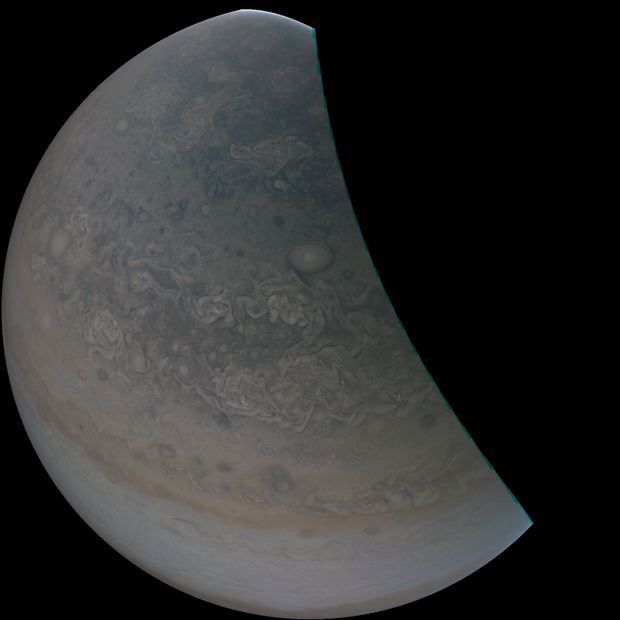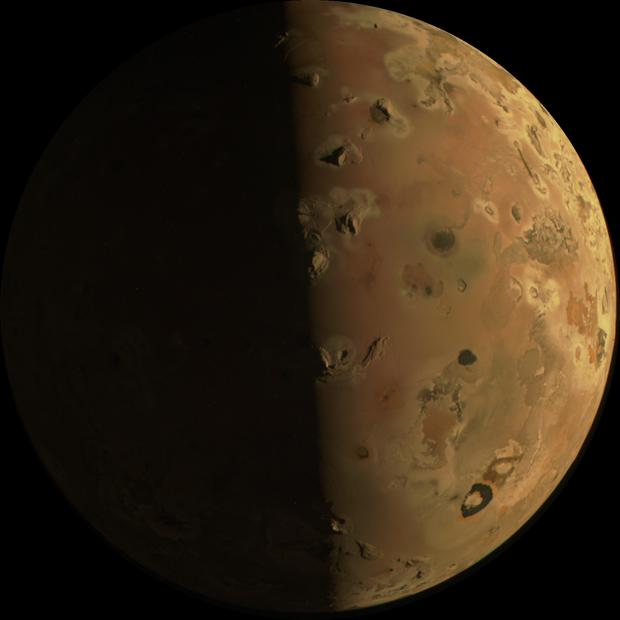
The NASA spacecraft reached its closest distance to Jupiter’s moon Io and shared new photos of the “most volcanic world” in our solar system.
A spacecraft from NASA successfully reached its nearest distance to Io, one of Jupiter’s moons, at just 930 miles above the surface of the highly volcanic world. The space agency has also shared recent images from the flyby.
NASA reported that Juno has been in orbit around Jupiter since 2016, gathering information about the planet and its moons.
According to NASA, Io, a moon of Jupiter, is a dynamic celestial body with numerous volcanic features. These volcanoes have such intense eruptions that they can be observed from telescopes on Earth. Io is one of 95 moons in orbit around Jupiter and is influenced by the gravitational pulls of neighboring moons and the planet itself, resulting in tidal forces that cause the surface to flex up to 330 feet.
NASA / SwRI / MSSS
NASA has not yet processed the data collected by Juno during its flyby of Io, but scientists are actively seeking additional insights into the behavior of the volcanoes in that region. A selection of images captured during the flyby have been shared on the internet.
NASA has issued a press release stating that they are currently seeking information on the frequency, intensity, and temperature of volcanic eruptions on Io, as well as how the lava flow’s shape evolves and its correlation to the flow of charged particles in Jupiter’s magnetosphere.
During the flyby, all three cameras on the spacecraft were in use. The Jovian Infrared Auroral Mapper utilized infrared equipment to capture thermal readings from Io’s volcanoes. The Stellar Reference Unit obtained detailed surface images, while the JunoCam captured visible-light color images, similar to satellite photos. The images shared by NASA online were taken by the JunoCam.
NASA / SwRI / MSSS
NASA has announced that the spacecraft will make another pass near Io on February 3, at a distance of 930 miles from the moon’s surface. Following this, the spacecraft will continue to pass near Io every other orbit, gradually increasing the distance, for a total of 18 flybys during its mission to Jupiter.
Bolton stated that Juno’s two upcoming close encounters in December and February will allow for the exploration of the cause of Io’s extensive volcanic eruptions. The mission will also examine the possibility of a magma ocean beneath Io’s surface and the impact of Jupiter’s tidal forces, which continuously exert pressure on this troubled moon.
More
More
Source: cbsnews.com
